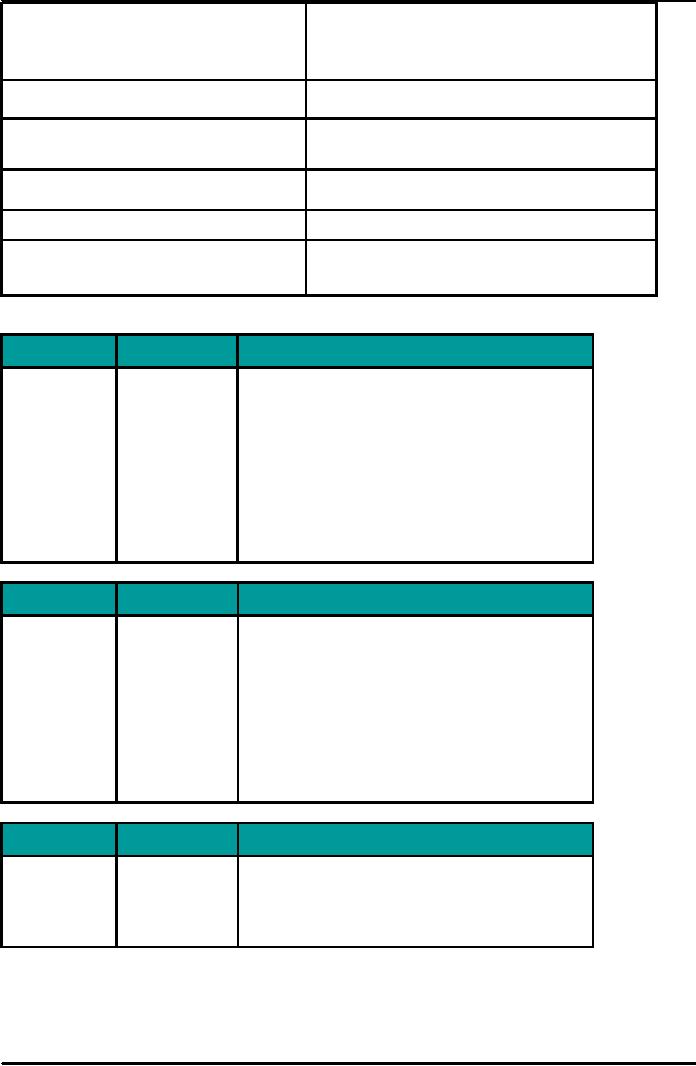 |
COMMUNICATING THROUGH TECHNOLOGY:Email Etiquette, Electronic Media |
| << THE APPEARANCE AND DESIGN OF BUSINESS MESSAGES:Punctuation Styles |
| BASIC ORGANIZATIONAL PLANS:Writing Goodwill Letters >> |

VU
Lesson
18
COMMUNICATING
THROUGH TECHNOLOGY
Challenges
to the organization Made by New
Technologies
Defining
Email
Email
refers to messages send over
computers and includes everything
from causal notes to friends
to
multimedia
presentations send access the
world.
Electronic
mail (email) lets you send a
message to a person without
your making direct contact or
knowing
where
that person is located.
Subscribers to electronic mail services
are called users, and
as a user, you can
access
messages on your system from
your home, office, hotel, or
anywhere you happen to
be.
Several
basic components make up
email systems,
including
1.
Users
2.
Messages
3.
Senders' and Recipients'
Addresses
4.
Protocols
5.
Messaging Transports
6.
Gateways
7.
Value-added Networks
8.
Directory Systems
1.
Users
Users
are often people, but users
can also be other computer
application programs.
2.
Message
A
message is the actual information
send by one user to
another.
3.
Addresses
Part
of the email information included in a
message is the addresses of both
sender and receiver,
which
include their unique identification codes
along with another identifier such as the
email systems, the
mailbox
number, or the organization.
4.
Protocol
Each
email system uses a protocol
that describes the structure of the
message, generally with
a
header
of TO; FROM and SUBJECT;
followed by the body, which
may include text, images,
graphics,
video
and audio.
5.
Message Transport
The
software that moves the
message from one system to
another in called the transport.
6.
Gateways
If
the message sent from one
system must get to a user on
another system, it must pass
through a
gateway
to be delivered. A gateway is an application program
that translates between two
protocols of
different
email system.
7.
Valued-added Networks (VANs)
Valued-added
Networks (VANs) are public
telecommunication companies, such as AT&T
or
PTCL,
that handle email services
to users for a fee.
8.
Directory Systems
As
a user, you can access
directory that contains names,
addresses, and sometimes
other
information
about each user to find the
email address you need to
send a message.
Using
email:
58

VU
With
email, you can reach
individuals, groups, or other computers
anywhere in the world to
share
information,
files of data, spreadsheets, videos,
music and anything else
that can be sorted on a
computer.
Email
can save your time in
printing, copying and distributing
your message. You can
use email to
send
and receive faxes and
telexes.
Email
is also useful in your
personal communications.
Writing
conventions for email are
still developing, but one
character is its being informal.
The
traditional
conventions of writing are not
followed in email.
Capitalization
can vary from one email
user to another; all punctuation
and capitalization except
for
periods
at the ends of sentences are
omitted.
The
immediacy and perceived
informality of email compose rambling
messages.
Understanding
how Email Works
To
send an email message, you
do the following:
Log
on. This
means connecting to a computer, network, or
email program. It requires the
user's
name
and a password.
Choose
the receivers of your message.
For this step, you need to
know the email addresses of
your
recipients.
Compose
the message
Instruct
the program to send the message.
Electronic
Media
Advantage
Email
offers
speed, low cost, increased
access to other employees,
portability, and
convenience
(not
just overcoming time-zone problems
but carrying a message to
many receivers at one). It's
best for
communicating
brief, noncomplex information that is
time sensitive, but its
effectiveness depends on
user
skill.
Because the turnaround time can be
quite fast, email tends to
be more conversational than
traditional
paper-based
media.
Email
Etiquette
Planning
Be
clear, concise, and polite
when you send an email
message. Plan your email
like letters and
memos.
∑
Decide
on the purpose
∑
Decide
on the content
∑
Write
all the ideas in point
form
∑
Put
these ideas into sequence
appropriate to the purpose
Advantages
and Disadvantages of Email
Advantages
Disadvantages
59

VU
Email
is a faster and more
efficient channel It ca be difficult to
distinguish between casual
and
than
regular mail (sometimes referred to as
formal messages because of
their similar layout
snail
mail). Most messages reach
anywhere in
the
world within minutes of being
sent.
It
can be send at any convenient
time
There
may be a time lag if the receiver
does not read
their
email for a few days
It
can be send to different
receivers at the same The
system is inaccessible to those
who are computer
time
illiterate
or not online.
Email
can be stored and sent at
off-peak Its contents may
reappear later in a variety of
printed
telephone
rates
forms.
It
saves paper
It
lack nonverbal communication cues to
add meaning
A
message can be written and
edited quickly by It can be
overused
several
people before it is sent
Elements
of a Good Online Writing
Style
Key
element
Purpose
Strategies
Clarity
The
communicate Create single-subject
messages whenever
possible
clearly
Open
the email message with a
sentence that either:
Connects
it to previous correspondence, or
Identifies
its purpose, or
Reflects
an awareness of the reader's
needs.
Focus
on the subject and
purpose.
Show
the reader how the content
affects them.
Present
new ideas clearly
Arrange
ideas in a logical sequence
Key
element
Purpose
Strategies
Readability
To
make
Use about 15 to 20 words per
sentence.
information
Limit
each sentence to one
idea.
accessible
Use
complex sentences of 25 to 35 words
sparingly as
they
require a high level of reading
skill.
Vary
the length of sentences to add
rhythm and
interest
to your writing.
Use
the active voice.
Avoid
slang.
Remove
ambiguous and unnecessary
words
Avoid
technical terms unfamiliar to the
reader.
Key
element
Purpose
Strategies
Positive
language To
create
a
Use direct and courteous
language
positive
first
Choose positive rather than
negative words.
impression
60

VU
Punctuation
To
keep
the
Start a sentence with a
capital and end with a
full stop.
meaning
clear
Check
that the sentence is not too
long.
Separate
ideas by using
paragraphs.
In
general, use more full
stops than commas.
Tone
To
establish the Avoid emotional
responses (called `flaming' in
ITs).
communication
Use a courteous and
tactful tone.
climate
Use
an appropriate level of formality.
Electronic
Media
Faxes
A
facsimile machine scans a
printed page, converts it to a
signal, and transmits the
signal over a
telephone
line to a receiving fax machine.
Although faxes have been
available for many years,
until recently
they
were slow and
expensive.
The
oldest type of fax machine
had to be connected to a machine of the
same type, and the
transmission
took several minutes.
Today's fax machines do not
require the same kind of machine at
the
receiving
end, and they can transmit a
page in less than 1 minute. The
newest fax machines use
digital
transmission,
which makes it possible to
use a computer program as a receiver.
These new faxes are
also
much
faster.
The
oldest type of fax machine
had to be connected to a machine of the
same type, and the
transmission
took several minutes.
Today's fax machines do not
require the same kind of machine at
the
receiving
end, and they can transmit a
page in less than 1 minute. The
newest fax machines use
digital
transmission,
which makes it possible to
use a computer program as a receiver.
These new faxes are
also
much
faster.
Voice
Mail
Voice
mail records messages on a computer disk
for later retrieval by the receiver. When
an
incoming
call is not answered, the
system responds by telling the
caller how to leave a
message or how to
reach
someone else. The receiver
of the call can then either listen to the
machine upon returning to
the
office
or access the message via telephone. This
process eliminates the problem of
telephone tag, which
can
be
so frustrating.
Voice
mail can be used:
∑
It
replace short memos and
phone calls that need no
response
∑
It is
most effective for short, unambiguous
messages
∑
It
solves time-zone
difficulties
∑
Reduces
a substantial amount of interoffice paperwork.
Voice mail is
∑
A
powerful tool when you need
to communicate your emotion or
tone
∑
It is
especially useful for
goodwill and other positive
messages
Other
Communication Technologies
Groupware
Groupware
allows several people to use
software at the same time to create
documents, keep track
of
projects, route messages,
and manage deadlines.
Groupware enables a supervisor to
manage work flow
61

VU
via
individual computers instead of
physically moving people form
place to place or having
face-to-face
meetings.
CD-ROM
database
Compact
Disk Read Only Memory
(CD-ROM) has been available
for several years and is
becoming more
popular.
It is powerful tool for
putting masses of information in a
form that is easy to digest.
Some kinds of
information
typically found on CD-ROMs
are encyclopedias, dictionaries,
telephone directories, and
articles
and
abstracts on various subjects. A
CD-ROM can store more
than 100,000 pages of text.
It will continue
to
grow.
Teleconferencing
It
is a rapidly developing technology that
will eventually change the way
companies do business
Teleconferencing
is
∑
Best
for informational
meetings,
∑
Ineffective
for negotiation
∑
Efficient
alternative to a face-to-face
meeting
∑
Discourages
the "secondary" conversations
∑
Helps
a participant focus on a topic
but prevents participants from
sharing valuable
information.
Videotape
Videotape
is
often effective for getting a
motivational message out to a
large number of people. By
communicating
nonverbal cues, it can
strengthen the sender's image of
sincerity and
trustworthiness;
however,
it offers no opportunity for immediate
feedback.
Computer
Conferencing
Computer
conferencing allows
users to meet and collaborate in
real time while viewing
and
sharing
documents electronically. It offers democracy
because more attention is
focused on ideas than
on
who
communicates them. But
overemphasizing a message (to the
neglect of the person communicating
it)
can
threaten corporate culture, which needs a richer
medium.
Editing
an Online Document
Have
I considered the receivers?
∑
Viewpoint?
∑
Experience?
∑
Knowledge?
∑
Need?
∑
Position
in the company?
∑
Cultural
differences?
∑
Technology?
Have
I presented?
∑
A
clear purpose
statement?
∑
A
logical order of information?
∑
An
appropriate, concise and complete
message?
∑
A
clear, readable writing
style?
∑
Positive
language?
∑
Paragraphs
focused on the ideas?
∑
A
courteous and confident
tone?
∑
Carefully
edited work, used spellchecker
and grammar checker
Have
I Met?
∑
The
reader's need to understand the
information?
∑
The
document's purpose
∑
The
writer's need to convey particular
information?
62
Table of Contents:
- COMMUNICATION:Definition of Communication, Communication & Global Market
- FLOW OF COMMUNICATION:Internal Communication, External Communication
- THEORIES OF COMMUNICATION:Electronic Theory, Rhetorical Theory
- THE PROCESS OF COMMUNICATION & MISCOMMUNICATION:Message
- BARRIERS IN EFFECTIVE COMMUNICATION /COMMUNICATION FALLOFF
- NON- VERBAL COMMUNICATION:Analysing Nonverbal Communication
- NON- VERBAL COMMUNICATION:Environmental Factors
- TRAITS OF GOOD COMMUNICATORS:Careful Creation of the Message
- PRINCIPLES OF BUSINESS COMMUNICATION:Clarity
- CORRECTNESS:Conciseness, Conciseness Checklist, Correct words
- CONSIDERATION:Completeness
- INTERCULTURAL COMMUNICATION
- INTERCULTURAL COMMUNICATION:Education, Law and Regulations, Economics
- INDIVIDUAL CULTURAL VARIABLES:Acceptable Dress, Manners
- PROCESS OF PREPARING EFFECTIVE BUSINESS MESSAGES
- Composing the Messages:THE APPEARANCE AND DESIGN OF BUSINESS MESSAGES
- THE APPEARANCE AND DESIGN OF BUSINESS MESSAGES:Punctuation Styles
- COMMUNICATING THROUGH TECHNOLOGY:Email Etiquette, Electronic Media
- BASIC ORGANIZATIONAL PLANS:Writing Goodwill Letters
- LETTER WRITING:Direct Requests, Inquiries and General Requests
- LETTER WRITING:Replies to Inquiries, Model Letters
- LETTER WRITING:Placing Orders, Give the Information in a Clear Format
- LETTER WRITING:Claim and Adjustment Requests, Warm, Courteous Close
- LETTER WRITING:When The Buyer Is At Fault, Writing Credit Letters
- LETTER WRITING:Collection Letters, Collection Letter Series
- LETTER WRITING:Sales Letters, Know your Buyer, Prepare a List of Buyers
- MEMORANDUM & CIRCULAR:Purpose of Memo, Tone of Memorandums
- MINUTES OF THE MEETING:Committee Membersí Roles, Producing the Minutes
- BUSINESS REPORTS:A Model Report, Definition, Purpose of report
- BUSINESS REPORTS:Main Features of the Report, INTRODUCTION
- BUSINESS REPORTS:Prefatory Parts, Place of Title Page Items
- MARKET REPORTS:Classification of Markets, Wholesale Market
- JOB SEARCH AND EMPLOYMENT:Planning Your Career
- RESUME WRITING:The Chronological Resume, The Combination Resume
- RESUME & APPLICATION LETTER:Personal Details, Two Types of Job Letters
- JOB INQUIRY LETTER AND INTERVIEW:Understanding the Interview Process
- PROCESS OF PREPARING THE INTERVIEW:Planning for a Successful Interview
- ORAL PRESENTATION:Planning Oral Presentation, To Motivate
- ORAL PRESENTATION:Overcoming anxiety, Body Language
- LANGUAGE PRACTICE AND NEGOTIATION SKILLS:Psychological barriers
- NEGOTIATION AND LISTENING:Gather information that helps you
- THESIS WRITING AND PRESENTATION:Write down your ideas
- THESIS WRITING AND PRESENTATION:Sections of a Thesis (Format)
- RESEARCH METHODOLOGY:Studies Primarily Qualitative in Nature
- RESEARCH METHODOLOGY:Basic Rules, Basic Form, Basic Format for Books